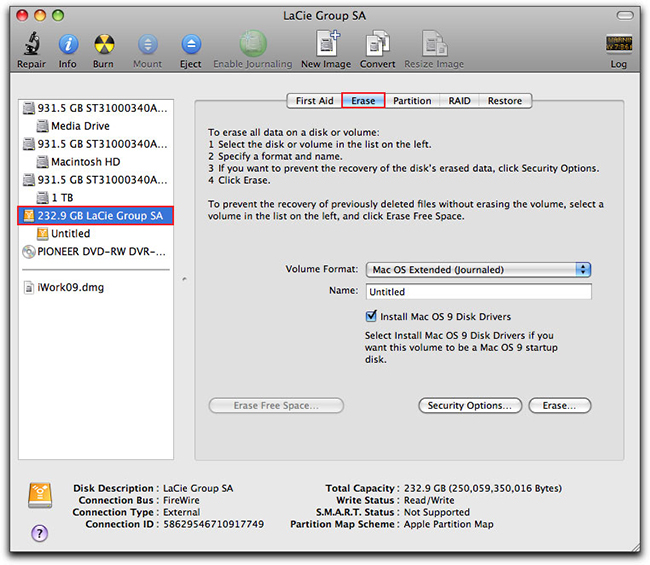

- #FORMATTED USB FOR MAC MAC OS#
- #FORMATTED USB FOR MAC SOFTWARE#
- #FORMATTED USB FOR MAC MAC#
- #FORMATTED USB FOR MAC WINDOWS#
If you’re not in a rush, the most secure option is obviously best, though you should be safe on the least secure setting, unless you have particularly sensitive data on the drive.Īll that’s left to do is press erase! Once you do this, Disk Utility will erase all of the data on your drive and format it to your format of choice. On the least secure option, a sophisticated program would be able to recover the deleted files, and on the most secure option, it would be more or less impossible for anybody to recover the files.

This brings up a slider where you can choose how deleted the files you erase from your drive really are.
#FORMATTED USB FOR MAC WINDOWS#
This is a good option if you’re formatting the drive for a Windows computer.
#FORMATTED USB FOR MAC MAC#
A Mac computer can read files on an NTFS drive, but it can not write files to that drive. NTFS: This is the Windows equivalent to APFS it’s Windows’s default drive format.ExFAT: The same as MS-DOT (FAT) except that it supports files over 4GB in size.And, since it’s a little older, it has no security features. However, MS-DOT (FAT) only allows files that are 4GB or less. It’s compatible with Mac, Windows, and Linux, making it a great option if you need to move files between the three operating systems. MS-DOT (FAT): This file format comes with a big benefit and a big drawback.
#FORMATTED USB FOR MAC MAC OS#
#FORMATTED USB FOR MAC SOFTWARE#
However, it’s not readable by a non-Apple machine (meaning you can’t plug the drive into a Windows or Linux computer) and Macs running software older than High Sierra won’t be able to read the drive.

First, plug your USB drive into your Mac. The simplest way to format a USB on macOS is through the Disk Utility.


 0 kommentar(er)
0 kommentar(er)
